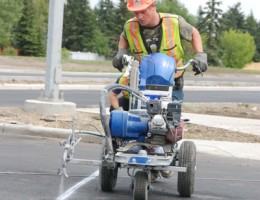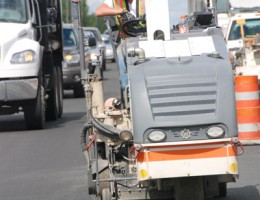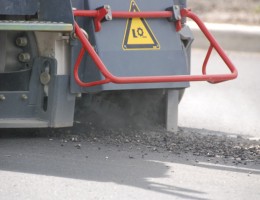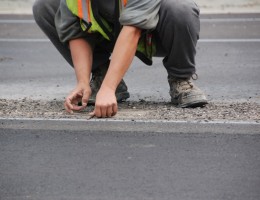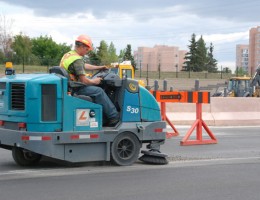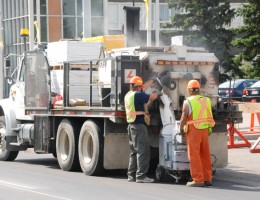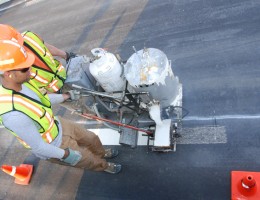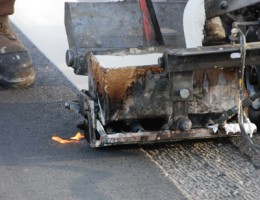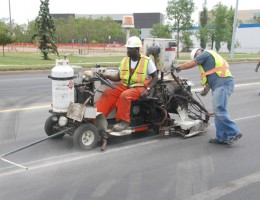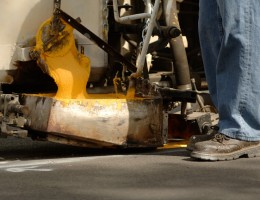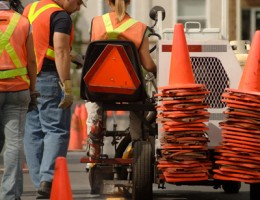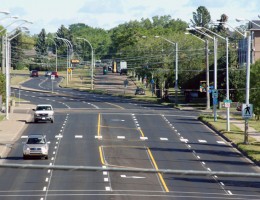Inlaid Road Markings
The ultimate in durability and longevity, inlaid road markings are applied to ground-out sections of asphalt to create markings flush with the road surface, or 2-3 mm above the road surface.
Inlaying the markings instead of applying them to the road surface extends the expected maintenance interval by 2 – 3 times on average, as they are more stable overall and highly resistant to damage from snowplow blades and other high-stress activity.
BENEFITS OF INLAID ROAD MARKINGS
- The most durable road marking product available
- Twice as durable as surface-applied markings (on average)
- Can be applied flush or 2-3mm above road surface
- No maintenance required for 7-10 years (on average)
- Very good retro-reflectivity mitigates damage from snowplow blades
- Great for longitudinal or transverse markings
- System 300 Thermoplastic is ISO:9001 certified
Due to their durability, inlaid markings are most suitable for urban applications in high-wear and high-ADT areas. They perform well for both longitudinal lines and transverse markings, and a single application is often enough for the life of the surface.
Inlaid markings are created using Lafrentz’s System 300 Thermoplastic – a product specifically engineered to provide stability and durability for inlaid applications.
SYSTEM 300 THERMOPLASTIC
Thermoplastic uses a heat process to create a hydrocarbon bond to the road surface. Lafrentz heats solid plastic blocks to high temperatures, and applies the liquid plastic to either longitudinal or transverse markings. Lafrentz has years of experience working with thermoplastic, and has been applying it to roadways since 1974.


